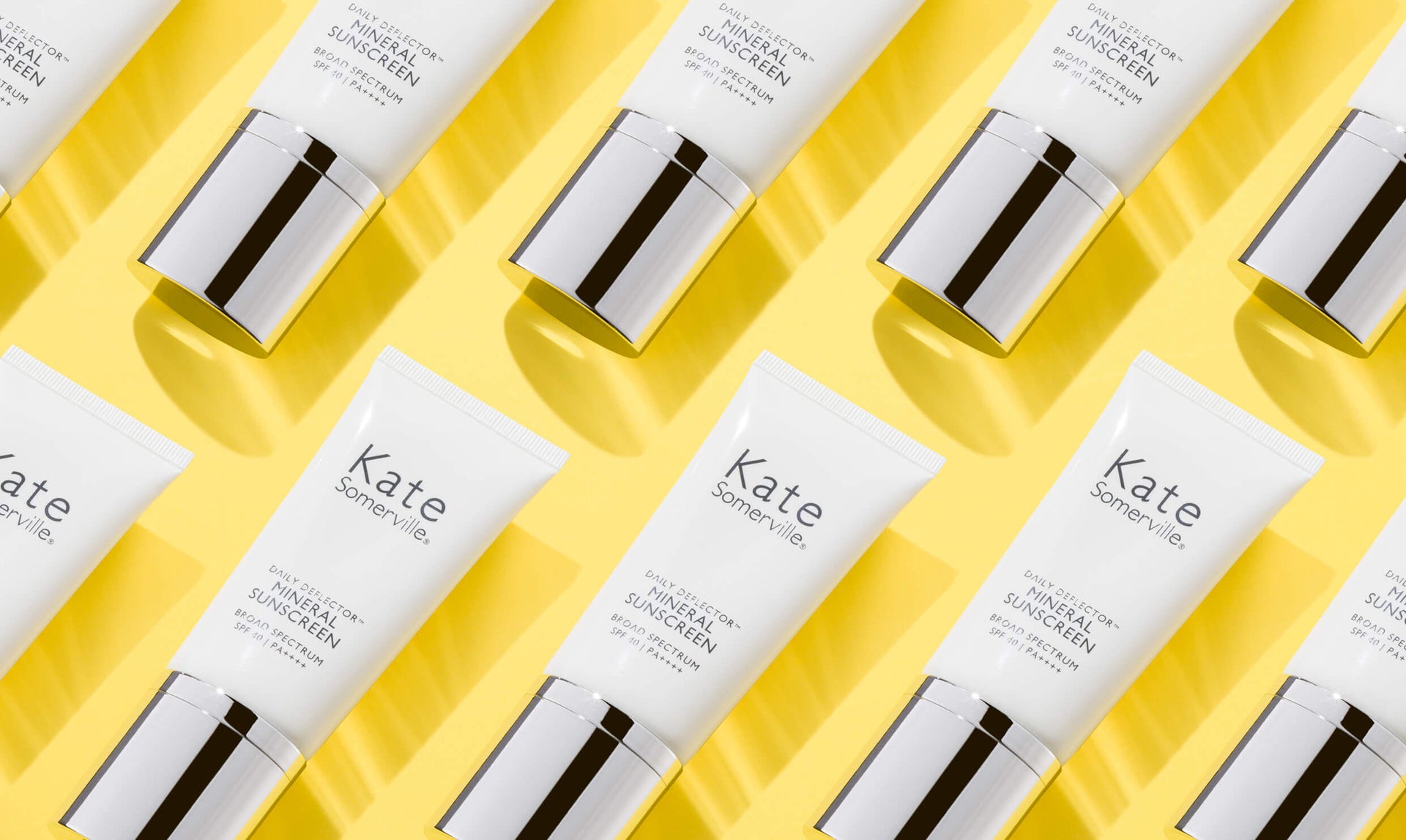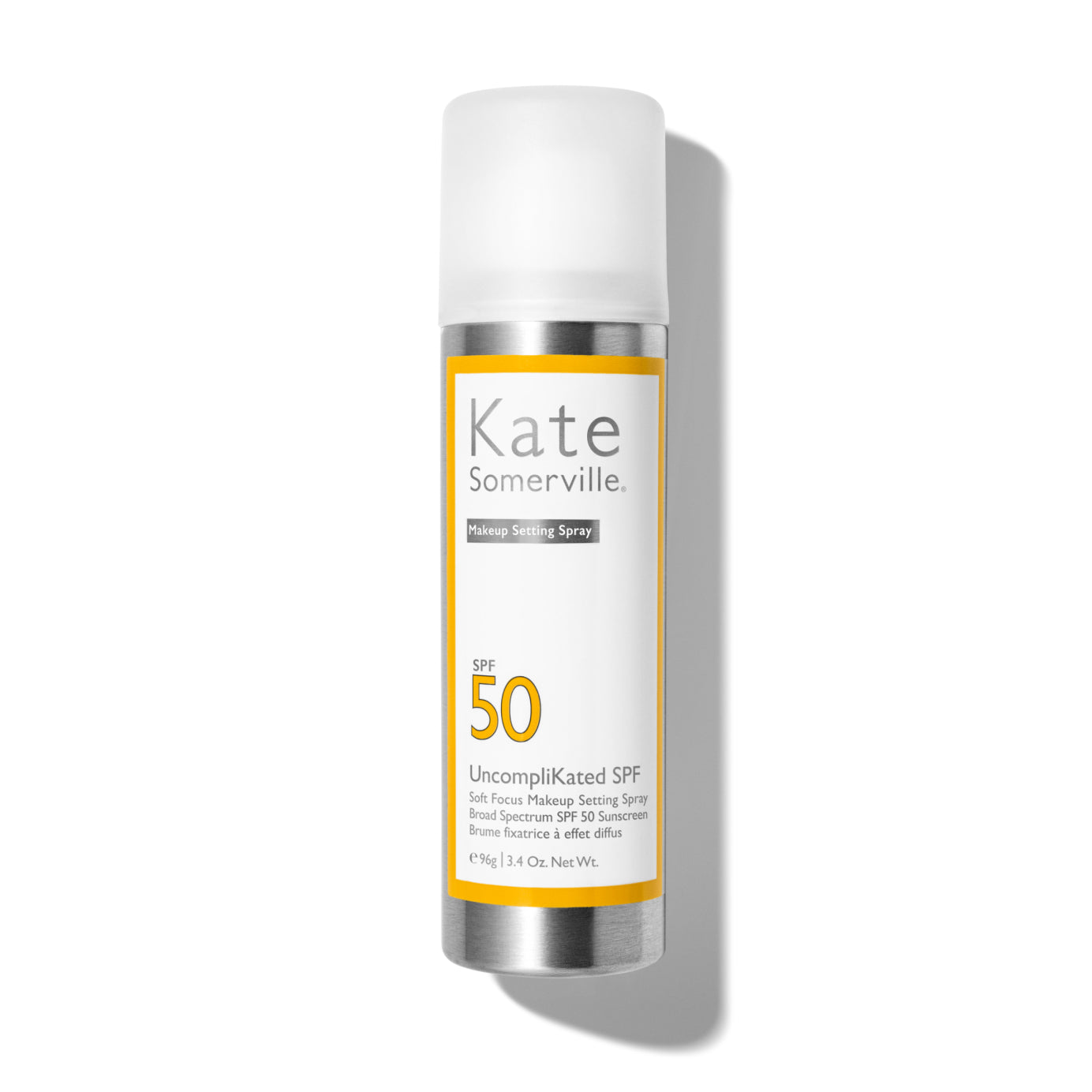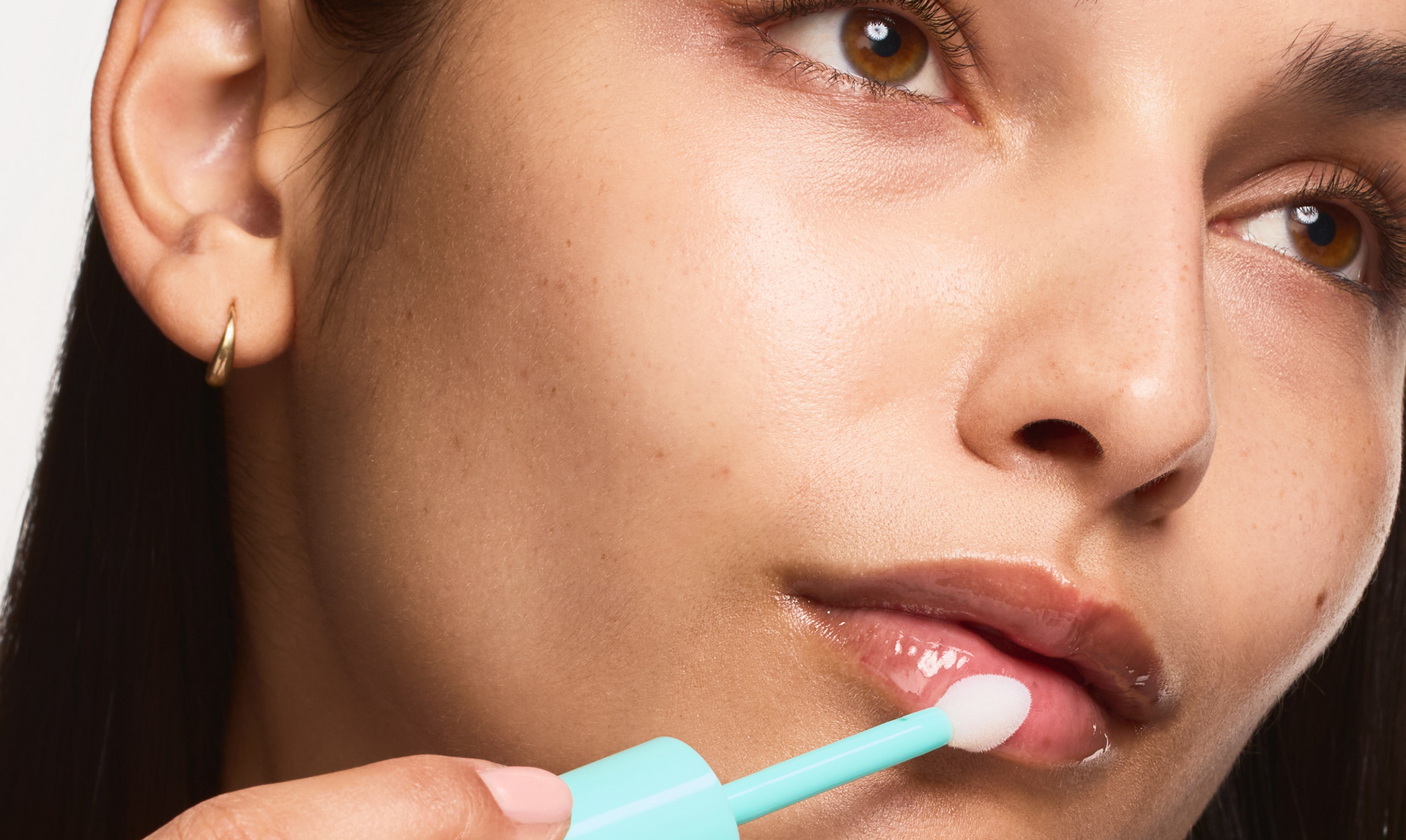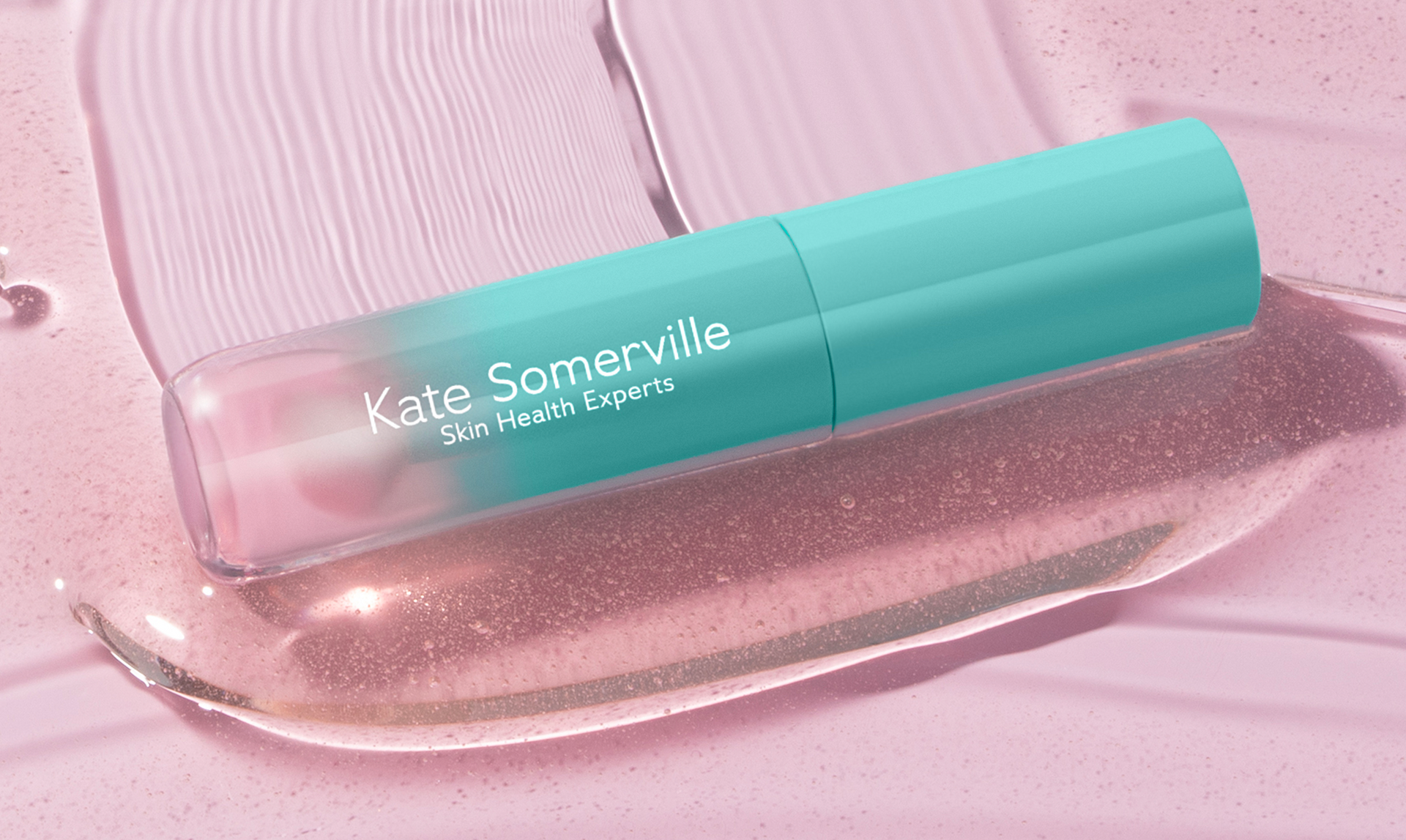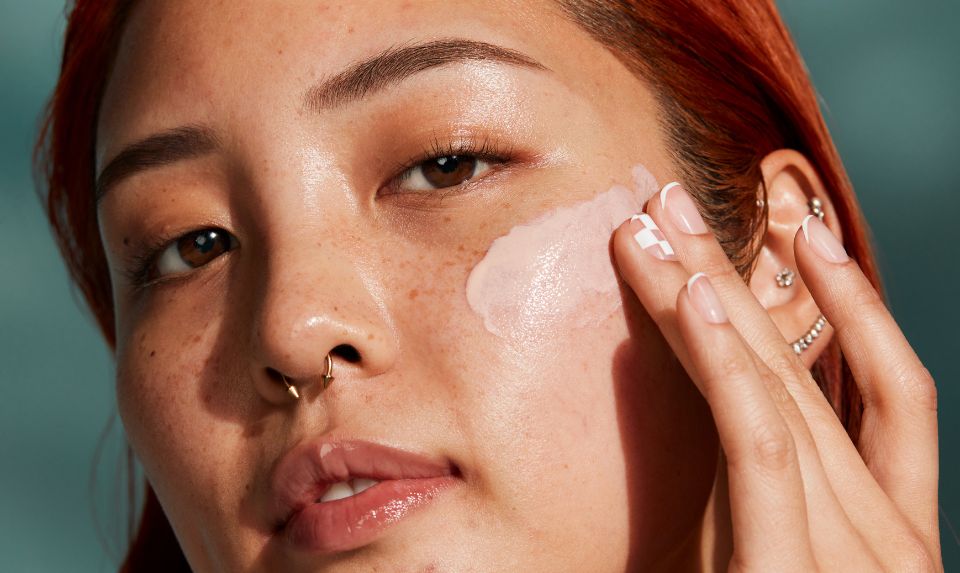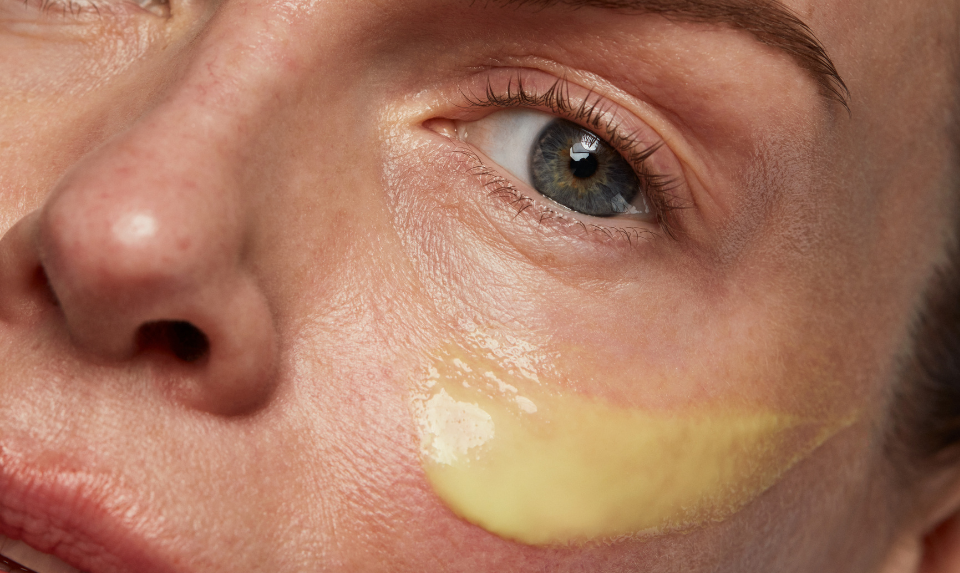Updated: May 2023
If you have an interest in skincare, are a product junkie, or obsess over ingredients like we do, you’ve most likely heard about the importance of wearing sunscreen. But do you know why daily sun protection is so essential? Or what really happens to skin in the sun without it? Statistics show that 80% of the visible signs of aging are caused by the sun. To avoid premature aging and sun damage to the skin, our Skin Health Experts recommend daily sun protection whether you’re staying indoors or going outside.
To help you fully understand the importance of daily SPF protection, let’s first explore everything you need to know about sunscreen, including the different kinds of UV rays and blue light, and how they impact skin.
What Are UVA Rays?
UVA rays are ultraviolet rays present in sunlight that are absorbed into the dermis skin layer, or middle layer of skin. UVA rays are responsible for prematurely aging your skin, causing wrinkles, age spots and can penetrate through window glass. UVA rays also play a role in skin cancer formation, so it’s important to protect your skin from harmful UVA rays – even when indoors - on a daily basis.
What Are UVB Rays?
UVB rays are also ultraviolet rays created by the sun. However, these rays are absorbed by the epidermis, or top layer of skin. UVB rays are responsible for causing sunburn. They also play an integral role in some forms of skin cancer, including malignant melanoma. Unlike UVA rays, UVB rays are blocked by window glass.
What Is Blue Light? [1]
Also known as high-energy visible light, blue light is the closest to invisible, ultraviolet light on the color spectrum. It comes from the sun as well as from electronic devices like computer screens, smart phone screens, tablet screens, etc. Blue light penetrates more deeply into the skin, reaching and affecting the hypodermis, or deepest layer. Scientific research shows that blue light has been known to cause premature photo aging, accelerating the visible signs of fine lines & wrinkles, sun spots and hyperpigmentation. Just think about how many hours a day you spend in front of a device or devices that emit(s) blue light and you’ll quickly understand the value of daily SPF that helps protect against blue light as well as UV rays.
Now that you know about the different rays and ways each impacts skin, let’s talk about SPF.
What Is SPF?
SPF stands for Sun Protection Factor. It refers to the amount of UVB radiation blocked - and the length of time before you burn. The higher the SPF number determines the percentage of UVB rays filtered out in your suncreen. For example, SPF 15 sunscreens filter out about 93% of UVB rays, while SPF 30 filters out about 97%. SPF 50 blocks about 98%, and SPF 100 about 99%. For optimal sun protection, we recommend choosing a sunscreen with an SPF of at least 30. Keep in mind that no sunscreen can completely protect you. Choosing one with optimal ingredients – ours are expertly formulated and vetted in our Skin Health Experts Clinic – will give you protection without irritation.
What Does ‘Broad-Spectrum’ Mean?
A broad-spectrum sun care product protects against both UVA and UVB rays. Because UVB rays are the main cause of sunburn, all sunscreens help protect against UVB. However, as we shared earlier, UVA rays can contribute to skin cancer and definitely cause premature aging. Which is why we recommend a broad-spectrum sunscreen for optimal protection.
Is ‘Water Resistant’ The Same As ‘Water Proof’?
In reality, no sunscreen is waterproof or sweat proof. Which is why reapplying sunscreen is essential to avoiding skin damage and keeping your skin protected throughout the day. Pay close attention to your sunscreen’s specific directives when it comes to how long it’s water resistant and how often you should re-apply. It’s also important to know that sunscreen rubs off when you towel dry yourself. If you’re swimming, sweating, showering, etc., you will want to be diligent in your reapplication efforts.
What Does PA Mean?
The PA rating system was originally established in Japan as a method of informing consumers of the level of protection provided by sunscreen. The pluses indicate the hierarchy of protection available. The more pluses, the higher the protection.
The rating system is as follows:
• PA+ = Some UVA protection
• PA++ = Moderate UVA protection
• PA+++ = High UVA protection
• PA++++ = Extremely High UVA protection
How Do I Choose The Right Sunscreen For My Skin?
As we mentioned before, everyone can benefit from daily sun protection with an SPF of at least 30. Beyond that, it’s really a matter of personal preference and skin type. You can choose a lotion-based SPF product, a spray-on sunscreen, or even a sunscreen stick. When considering which sunscreen products to purchase, consider if you want something that will work well under or over makeup, is easy to reapply, and also what sunscreen ingredients are important to you. You will also want to explore both mineral and chemical sunscreens, as those are important considerations, too.
What Is A Chemical Sunscreen?
Chemical sunscreens work like a sponge, absorbing the sun’s rays. In the US, they contain one or more of the following active ingredients: oxybenzone, avobenzone, octisalate, octocrylene, homosalate, and octinoxate. These formulations tend to be easier to rub into the skin without leaving a white residue. At Kate Somerville, our SPF Setting Spray is a chemical sunscreen with SPF 50 protection in a fine mist spray that works great after makeup and instantly mattifies skin. It’s also easy to take on the go and reapply throughout the day.
What Is A Physical Sunscreen?
Physical sunscreens work like a shield, sitting on the surface of your skin and primarily working by deflecting the sun’s harmful UV rays. They contain active ingredients like zinc oxide and/or titanium dioxide. Our Kate Somerville HydraKate Illuminating SPF 50+ Drops is a mineral sunscreen with 24.5% non-nano zinc oxide and a ceramide complex that protects, restores and repairs skin. It also helps shield against blue light and is suitable for people with sensitive skin. HydraKate Drops works well under makeup as the final step in your morning skincare routine.
You may find that you have use for both chemical and physical sunscreens in your sun protection routine. The important thing to remember is that consistent sun protection is key to maintaining skin health as well as preventing the visible signs of aging.
Sources:
1] Visible Radiation Affects Epidermal Permeability Barrier Recovery; Selective Effects of Red and Blue Light. Journal of Investigative Dermatology (2008) 128, 1335-1336, published online 15 Nov 2007
[1] Blue Violet Light Irradiation Dose Dependently Decreases Carotenoids in Human Skin, Which Indicates the Generation of Free Radicals. Charit´e-Universit¨atsmedizin Berlin, Department of Dermatology, Venereology and Allergology, Charit´eplatz 1, 10117 Berlin, Germany. Hindawi Publishing Corporation
Oxidative Medicine and Cellular Longevity
Volume 2015, Article ID 579675, 7 pages
http://dx.doi.org/10.1155/2015/579675
[1] Photochem. Photobiol. Sci., 2011, 10, 1887 www.rsc.org/pps
Are there mechanistic differences between ultraviolet and visible radiation
induced skin pigmentation?
Rajagopal Ramasubramaniam,* Arindam Roy, Bharati Sharma and Surendra Nagalakshmi
Received 27th June 2011, Accepted 10th September 2011
[1] Blue Light Induces Mitochondrial DNA Damage and Free Radical Production in Epithelial Cells*
HE JOURNAL OF BIOLOGICAL CHEMISTRY
© 2005 by The American Society for Biochemistry and Molecular Biology, Inc.
ol. 280, No. 22, Issue of June 3, pp. 21061–21066, 2005 Printed in U.S.A.
received for publication, February 25, 2005, and in revised form, March 28, 2005 Published, JBC Papers in Press, March 29, 2005, DOI 10.1074/jbc.M502194200
